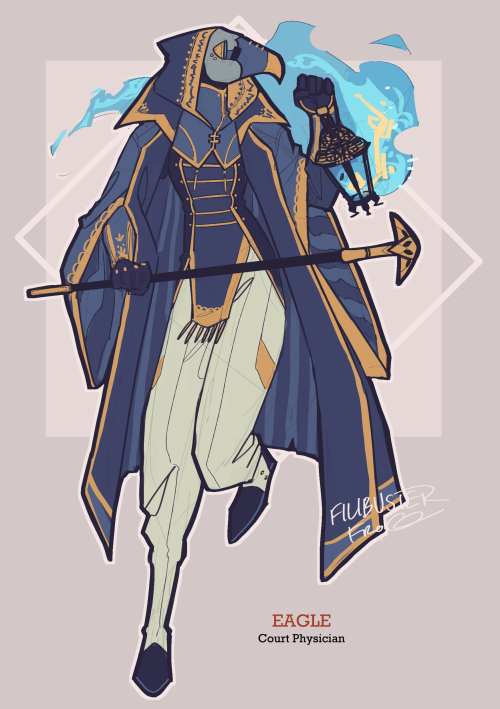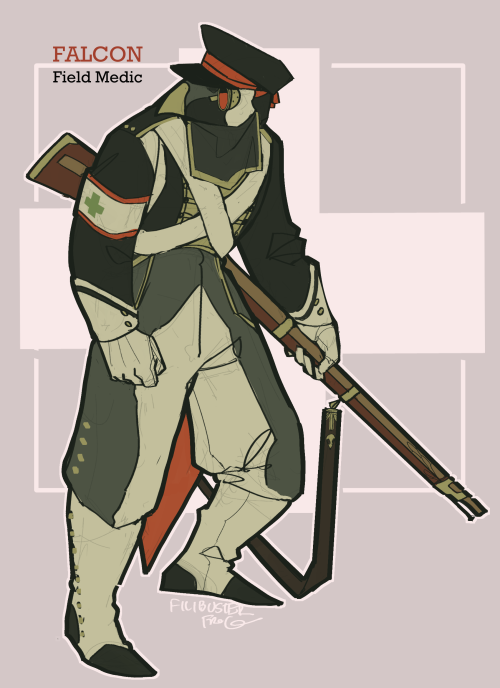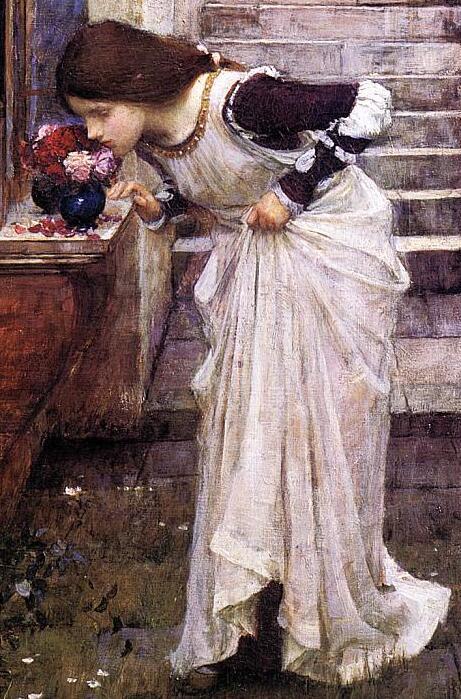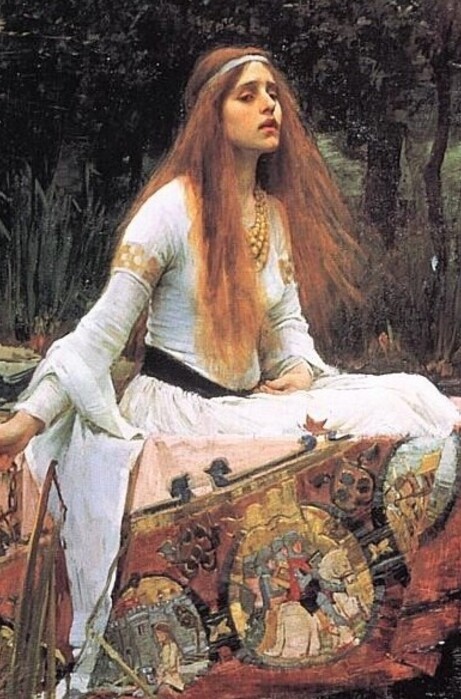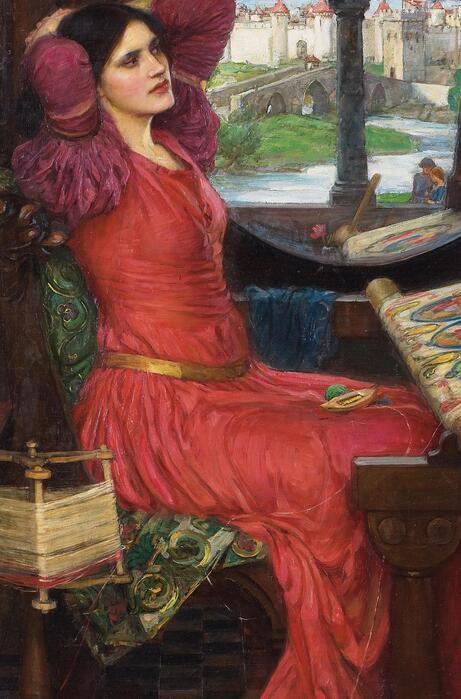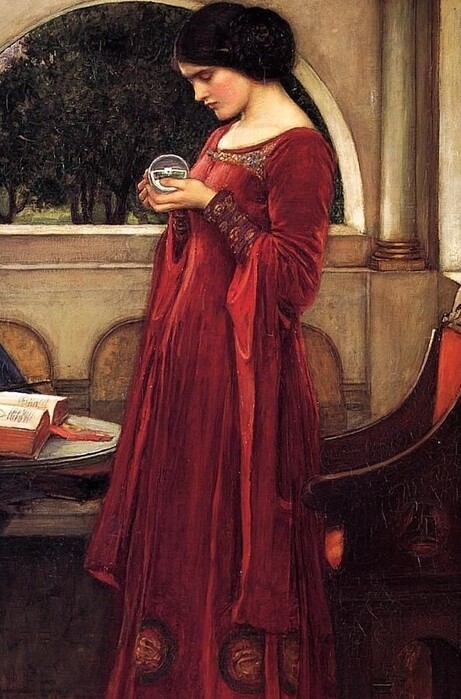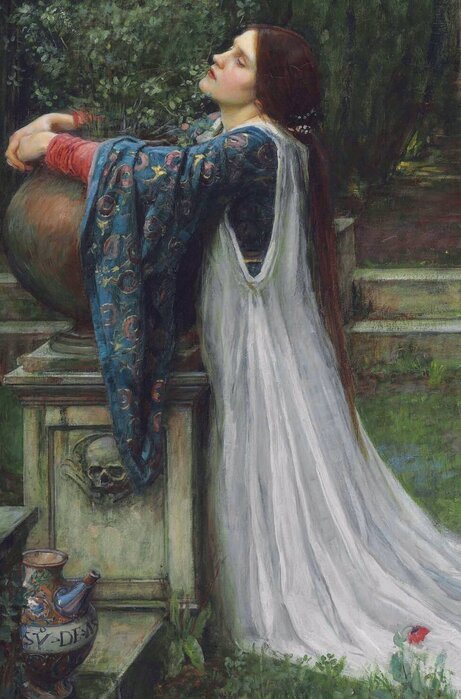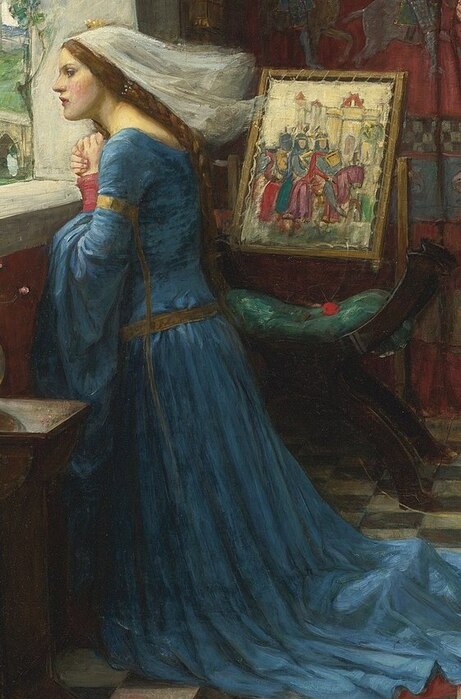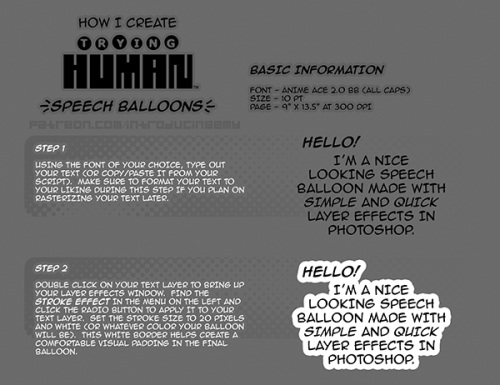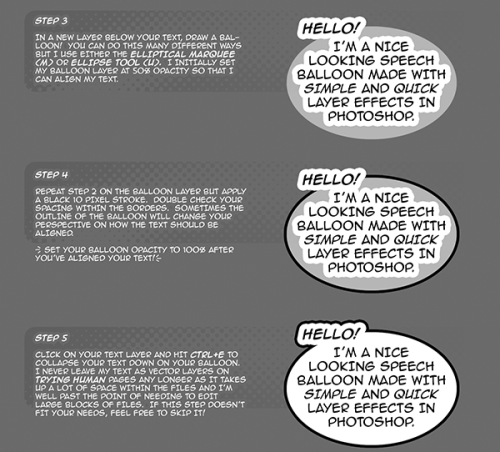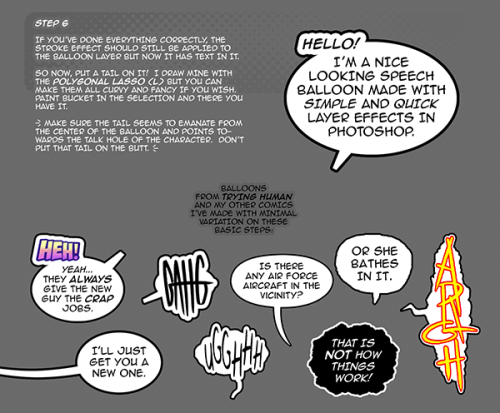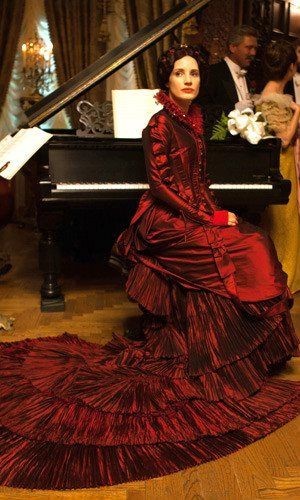I Don't Know What I'm Doing When I Draw 90% Of The Time But Here's How I Make My Paintings✨
I don't know what I'm doing when I draw 90% of the time but here's how I make my paintings✨










More Posts from Ladyforger and Others
a quick grass tutorial
I’ve never really wrote a tutorial before so apologies if this is bad
1. okay first thing I do is pick three colors, a mid, dark, and light. I like to check the colors in greyscale to make sure there’s enough contrast between each one.
I then plop down a blob of whatever my middle tone color is.

2. next, I take my dark color and just sort of randomly place it around. I try to make sure there’s a good amount of both the mid and dark tones spread throughout. I personally like to keep it kinda messy. I also have pen pressure on for both brush size and opacity, so I can have some blending action going on.

3. for the next step I do the exact same thing as before, except with the light color.

4. aight this is where we start adding details. see how you just have a bunch of colors and edges where two colors meet? use the eyedropper and go to an area where two colors meet, eyedrop a color, and then use that color to draw in your grass blades. I do this at every point where colors meet. should note I personally like to use a square brush, but you can really just use anything.

5. you can technically stop at the last step if you’re going for a more simple look, but to add more details I go to the “empty” areas of solid color and just draw in random strokes using a color nearby. it’s just a way to fill up the empty space.

6. basically more of the same idea of eyedropping and drawing. for more variety so things look interesting, I like to add random plant shapes.

7. and so the grass doesn’t look too plain, I add random dots of color and pretend it’s flowers and stuff.

and there you have it, this is how I approach drawing grass.
A lit of people think that worldbuilding exists solely to make epic, sweeping fantasy worlds to quest across, but it can create smaller, softer, mundane worlds to inhabit too.
You can worldbuild a small village. You can worldbuild a bookshop. You can worldbuild a jail cell, or a wishing well, or a single-parent household.
Not every story wants a grand scope.
Some slightly different wordlbuilding activities
Ones I haven’t seen as often but apply myself.
1.- Bedtimes stories you tell to children, or lullabies. They can be based in location or species. They can tell us about the world, history, beliefs or something specific about a creature. It can be fun to think of their origin, how they’ve changed over the years and both the meaning that was lost and the meaning that was added.
2.- Fashion choices. I often let fashion be different for different creatures. I usually create a practical outfit that makes sense historically within the context of my world and then evolve it until I get to the present day of my story. Preferably splitting of into branches and allowing more options. It can tell us about a specific species, about their history and about how the climate has changed, or how they moved locations at some point and had to adapt their clothing to a new climate.
A very simple example of this from my own book would be the mage’s cloak! Link to a longer post about it. Basically, mages would wear a simple one piece fabric that was easy to then set an illusion over, no wasting time mixing trousers and tops. Over time some mages stopped using illusions, seeing the outfit as acceptable. It became a staple, you saw the cloak, that wasn’t a human but a mage. And then younger generations began personalising the material, instead of boring black, white or brown they started using floral patterns, adding in cool sleeves or hoods!
Initially, it was practicality, but it evolved.
3.- Think about what each species does for fun! I often read YA fantasy where the stakes are so high there is no leisure, no downtown, no fun, no hobbies. But this is a great opportunity! What’s popular in your world? Books, plays, board games, long walks, playing sport? Seeing characters just chill can be a great change of pace and allow for some insight into their lives and the world they live in.
4.- What is imported? And why? Sometimes imports are just practical, we don’t have wool here (unlikely, sheep are literally everywhere, but you get the point), wool is good for clothes, we import it. But other times it’s more complicated.
Perhaps a species moved across the country at some point, but they were accustomed to a certain type of tea, fruit for certain festivities, so on, so on, and habit dies hard, so, importation becomes a thing.
So those are my four world-building tips for today. I’ve said it before and will say it again, there is no master list, not check list, world-building is something you can figure out as you go in most genres (some epics may requiere more prep time). What’s important is to keep track of what you’ve said and stay consistent, but you don’t need to know everything before going in.
As usual, check out my book, stories I’ve written plus other social medias: here.
How’s your world coming along?
Avoiding ambiguous brown without cultural coding
@ahivemindoftwelvecati asked:
How should I, a white person, avoid making characters fall into the vaguely brown stereotype in my fantasy books? I’m against coding cultures into this book, as I’m really trying to create a unique world (ironically by studying a lot of different cultures). By doing this though, am I doomed to remove characters from cultural context, or leave people wandering in vague color shades? Especially since some of my characters would fall into various indigenous ethnicities, but share nothing cultural
In an interesting way, I think the Star Wars novels kind of do an okay job about it (of course, others might differ, in which case I defer to them, but in my opinion they pull off something similar). For context, it all takes place in a galaxy where absolutely none of Earth’s cultures are present, but there are still human beings that are Latine-coded, Black-coded, etc, and they accomplish this through very simple descriptions of character appearances. For example, there was a Black-coded woman and her description ran something along the lines of “She had dark, rich brown skin and her hair was curled tightly, pulled back into a bun. She hated the moist heat of the swamp planet, but she had to admit her hair never looked better.” Through that, the audience understands that she’s most likely Black-coded (dark skin+tight curls), but they avoid cultural points (also the little detail of humid heat being great for curls is just a cute lil extra IMO, that’s something I hear people with 3- or 4-type hair saying a lot).
The pitfall here is that, since there’s no cultures analogous to what we have here in our world, each reader will have different interpretations of what each character might identify as ethnically. Who someone might headcanon as Korean, another might headcanon as Chinese, etc. That’s something you have to figure out for yourself if you’re okay with having–just that vague sense of ‘ah, this person must be from this vague region of the world’–or if you want to be more explicit.
–Sophia
So… to expand on the point Sophia put out that it’s up to the reader to determine what race somebody “really” is and how that’s a problem.
One of my best friends is mixed Japanese/white. Thanks to genetic roulette, they get approached by various Indigenous peoples asking what nation they’re from, because they look really Indigenous.
I’m mixed Mohawk/Mi’kmaq/white. Thanks to genetic roulette, nobody can tell where I’m from and I’ve gotten everything from West Asian, North Indian, and Great Lakes Native (basically, anywhere that golden-tanned skin + dark hair + no monolid is considered normative, I could pass for there)
My mom, meanwhile, looks very, very Mexican, despite being the same mixes as me at a higher percentage Native; she tans more pink/red and tans darker than I do. She also has a totally different face shape than I do.
Aka, there are dozens upon dozens of groups that look interchangeable, and the only thing that separates us is our culture.
When you’re dealing with more “obvious” features like type 4 hair, monolids, very dark skin, very pale skin, and those stereotypical things, yeah, you can usually peg down a general region. You’re basically only going to have Black people with kinky, delicate hair (but, are they African, Australian Indigenous, or Black Native? Because Australian Aboriginals are also very dark skinned and have a similar hair texture; Black Natives sometimes inherit the level 4 hair texture). You’re basically only going to have Northern settled peoples with white skin (barring albinism/vitiligo) but are they Norwegian or Sami?
What happens to all the people who are ambiguous in real life?
The trope has a basis in reality. Humans would like to think that a certain set of features = obviously from this place, but as soon as you expand your sample size beyond models, movie stars, and idealized art, you find that people look really different and you absolutely cannot rely on this logic.
It’s even a known fact among the modelling industry that anyone vaguely not-white who looks like they could maybe belong to any other group of brown people is put in for casting calls for that group, even if they’re not part of that group. It’s messed up, but it happens all the time. A Latine person could be put in as Arab, and an Ojibwe person can be put in as Filipino.
Culture is the thing that separates these people in real life. So as soon as you take that culture away, you’ve essentially lost any representation you could get. You’ll get diversity, yes, but it will not be representation.
Sure, you perhaps gain some representation as people look at parts of their culture that might be incorporated (maybe by accident, maybe on purpose) and say “hey, that’s us!”
But you’ve also strewn infighting by having perhaps multiple groups be able to say the same thing, and these multiple groups could very well share a lot of phenotypic traits, so suddenly you’ve represented nobody because you haven’t put anything solid that would sway the needle one way or the other.
If you start to assume too much that features = obviously this person is from x part of the world, then you really ignore a whole lot of human migration, diffusion, and people who just lived in really similar biomes so their physical features, skin tone, and hair type ended up being the same just purely because that had the best chance of surviving the region, or had no reason to change.
Diversity exists because of the environment. Skin tone, hair type, jaw shape, etc exist because of the food available, how it was grown/gathered (horticulture and “hunter-gathering” vs agriculture), the way food was eaten, the amount of sunlight, and the vitamins available in diet. This happened over tens of thousands of years.
But also, certain environments produced very similar coping strategies. There are only so many ways to survive a very hot desert, so unless you’ve really messed with the natural world in fantasy, you’re going to end up pulling from earth’s coping strategies for the very hot desert. Which means you could end up being kinda hurtful towards desert peoples who see their clothing and food growing ways used, with people who look like them because skin tone is environmental, but hardly anything else about their culture was taken.
Especially for Indigenous peoples, culture and land protection is what makes us Indigenous. How are you going to show us in your work unless you dig into our cultural principles (land protection) at the very least? Nothing about our facial features or skin tone are particularly unique to us, and assuming they are is how you get caricatures. There are Black Natives* to white Natives to mixed cultures with European and Indigenous practices (Metis) and everything in between. And that’s just North America’s range.
This isn’t even counting how there are Indigenous people everywhere, so when you say “Indigenous” do you mean the Mohawk? The San? Mbororo? Ainu? Sami? Samoan? There are literally thousands of groups that are primarily separated from the dominant group because of their way of life and maybe some subtle phenotyping. But primarily, they are separated by their culture.
I would suggest, at the very least, to have some degree of basic cultural beliefs to help differentiate groups of brown people who would otherwise be interchangeable. Land stewardship and using every part of the natural world for Indigenous groups, for example. You can’t really find Indigenous groups without that, so if it was missing I would raise an eyebrow.
Distinct foodstuffs and diets are another way to differentiate and code; you know that this group that uses chickpeas, sorghum, barley, and wheat is probably from West Asia, and that group that eats rice at every meal is probably somewhere from East Asia. Food is a very fast way to differentiate between groups, because even far-reaching staples are fairly different across cultures.
You don’t have to 1 to 1 code a culture. But for actually differentiating between people, you’re going to need more than one point of reference beyond looks. Food, nomad status (as in, settled vs nomadic vs hybrid), basic religious practices (monotheist vs pantheist), and broad-reaching cultural attitudes (collectivism vs individualism, who you’re expected to be collectivist with) are all points that help break apart these groups and let them know you see them.
It’s important to note that even if you do fantasy, it’s read in the real world. It’s read by humans, who are pattern recognizing machines. We will see patterns. Niki points out ways to try and avoid this patterning below, but it’s going to happen regardless.
It’s up to you what you actually want, out of not overtly coding anyone.
~ Mod Lesya
*Black Natives and cultural practice is a fraught topic (mostly because of slave-owning tribes) that is mostly summed up as: Black Natives are often barred from tribal participation because anti-Blackness is rife within North American Indigenous communities, but they have been tending the land just as much as if not more than their former enslavers; as such, they are members of the cultures/nations and should be recognized. They have been part of the land as North American Indigenous peoples for centuries, at this point, and the fact there is still enough anti-Blackness in Native communities that Reservation Dogs used nothing but Black caricature is… a problem to say the least.
This isn’t counting mixed Black/Natives who had their Native parent/grandparent cast out for marrying someone Black, who were raised in cultural practices without community ties because of anti-Blackness, who should also be recognized. If it’s valid to mix white culture with North American practices, it’s valid to mix Black culture (Black American and/or African Indigenous) with North American practices.
Do you want diversity or do you want representation?
Lesya raises a very important point that I encourage you to really think about. Why do you want to have diversity in your fantasy worldbuilding? Is it because you want your readers to feel seen and represented? Or is it because you want your fantasy world to feel well-rounded and realistic? These are two different motivations, which will require different approaches.
If you want representation, then go back and reread Lesya’s answer. Representation that’s only skin-deep isn’t really representation, and won’t help your readers feel seen. If, however, you want diversity for diversity’s sake–because diversity is realistic, and because it’s simply good writing to include it–then I have some more thoughts to offer.
In my opinion, there’s nothing wrong with creating a fantasy world that has fictional diversity that doesn’t directly parallel real-life groups and cultures, as long as you’re aware that that’s what you’re doing. This is arguably very common in high fantasy, though the effectiveness with which it’s executed varies wildly from author to author. N. K. Jemisin describes what she did for the Broken Earth trilogy in this blog post.
Unless you’re working with a very small subsection of the world (and even then–everything’s connected), diversity is natural, because people will be living in different geographical areas that each have their own climate, fauna and flora, which will shape both their physical appearance and their way of life. Thinking about the physical environment is a good starting point for figuring out what your population groups will look like and how they’ll behave.
But as Lesya pointed out, it’s very easy, when doing this, to inadvertently re-create elements of coding that will remind your readers of real-world groups, even if that wasn’t your intent. If that happens, you’ll have two options:
1) Very deliberately alter the coding to make it clear that you’re not trying to represent a certain real-world group (in the post I linked above, Jemisin talks about what she did to avoid appropriating Maori culture), or
2) Embrace it and go the representation route after all, which will entail a lot of research and care to make sure your coding makes sense, is respectful, and doesn’t reinforce harmful stereotypes.
Assuming you’re going with option 1, there are still more issues to be mindful of. We said before that representation that doesn’t include culture isn’t really representation. Here’s the thing: This is also true of fictional diversity. Even if your fantasy cultures are entirely created from scratch, they still need to exist, and be distinct and thoughtfully portrayed, in order for your world to feel well-rounded and realistic.
Diversity is more than physical appearance
As Lesya demonstrated, physical appearance alone isn’t enough to make groups of people distinct from another. In order to avoid the “ambiguous brown” trope you’re worried about, you will need to give your different groups of people distinct cultures.
There might be some cases where it would make sense for an entire fantasy world to have a single, homogenous culture, within which people of various ethnic backgrounds exist, resulting in a variety of physical appearances but everyone sharing the same culture. But if you’re planning to do this, you need to give a lot of thought to why things came to be this way. If an entire world is made up of a single culture, that usually indicates something very traumatic happened on a large scale. Maybe an apocalypse, or massive amounts of forced assimiliation or genocide. I don’t recommend going that route unless you’re willing to grapple with all the trauma that entails, and all the potentially problematic implications. You’re much better off populating your world with a diversity of cultures. They don’t need to be coded based on real-world cultures, but they need to exist.
In my opinion, the main issue with “ambiguous brown” characters is that it makes it seem we’re all interchangeable. In real life, we’re not. Make sure that’s the case in your fantasy world, too. Craft your population groups so they’re distinct, each with their own history, culture, language, and traditions. Your worldbuilding needs to be deep enough to counteract the absence of parallels to real-life cultures. We need to be able to look at it and say, “okay, this is not representing me specifically, but it’s also not lumping me in with everyone else that vaguely looks like me.”
And don’t make the mistake of thinking one skin tone = one group. That’s not true in real life, and it shouldn’t be in fantasy either. Using skin color and a handful of stereotypical features as shorthand for ethnicity or culture is not only shallow worldbuilding, it also feeds into the racist pseudoscience that sorts people into four or five neat color-coded boxes and collapses the world’s diversity into a handful of supposedly biologically determined races. If you’re creating cultures from scratch, this is your chance to challenge those ideas and populate your cultures with people who don’t all look the same. Within a single group, you can have characters with a variety of skin tones, hair texture, eye color, height and build, etc. Because this is what happens in the real world. Some groups include a lot more diversity than others, but variation exists everywhere.
This will partly depend on how interconnected your world is, and how much interaction exists between your various groups. More interaction and exchange tends to lead to a wider range of physical characteristics within each group, and it also results in similar features being found in multiple groups. Think about how that might play out in your fantasy world, and make sure you’re being as specific as possible with your fictional cultures so that you don’t have to rely on physical appearance alone to distinguish your population groups from one another.
- Mod Niki
-
 badkatart liked this · 3 months ago
badkatart liked this · 3 months ago -
 xbluebloodberryx liked this · 1 year ago
xbluebloodberryx liked this · 1 year ago -
 sleepyjayjayx liked this · 1 year ago
sleepyjayjayx liked this · 1 year ago -
 missdragon42 liked this · 1 year ago
missdragon42 liked this · 1 year ago -
 temporacidal reblogged this · 2 years ago
temporacidal reblogged this · 2 years ago -
 robocatfan reblogged this · 2 years ago
robocatfan reblogged this · 2 years ago -
 robocatfan liked this · 2 years ago
robocatfan liked this · 2 years ago -
 cyncerity liked this · 2 years ago
cyncerity liked this · 2 years ago -
 rexslapmyass liked this · 2 years ago
rexslapmyass liked this · 2 years ago -
 cheribeanart liked this · 2 years ago
cheribeanart liked this · 2 years ago -
 kabukeo liked this · 2 years ago
kabukeo liked this · 2 years ago -
 blubeetle liked this · 2 years ago
blubeetle liked this · 2 years ago -
 sticksanddirt liked this · 2 years ago
sticksanddirt liked this · 2 years ago -
 lillithcookie liked this · 2 years ago
lillithcookie liked this · 2 years ago -
 sirsphyrnidae liked this · 2 years ago
sirsphyrnidae liked this · 2 years ago -
 i-am-h-squared liked this · 2 years ago
i-am-h-squared liked this · 2 years ago -
 dutchesscoraline liked this · 2 years ago
dutchesscoraline liked this · 2 years ago -
 meme-steamet04 liked this · 2 years ago
meme-steamet04 liked this · 2 years ago -
 noa12357 liked this · 2 years ago
noa12357 liked this · 2 years ago -
 aliaa-j liked this · 2 years ago
aliaa-j liked this · 2 years ago -
 lyaz0-m reblogged this · 3 years ago
lyaz0-m reblogged this · 3 years ago -
 lyaz0-m liked this · 3 years ago
lyaz0-m liked this · 3 years ago -
 my-reality-my-rules liked this · 3 years ago
my-reality-my-rules liked this · 3 years ago -
 hewwofriends liked this · 3 years ago
hewwofriends liked this · 3 years ago -
 junie-buggle liked this · 3 years ago
junie-buggle liked this · 3 years ago -
 chaosofsmarty liked this · 3 years ago
chaosofsmarty liked this · 3 years ago -
 asphuxia liked this · 3 years ago
asphuxia liked this · 3 years ago -
 0rbit liked this · 3 years ago
0rbit liked this · 3 years ago -
 mess-in-public liked this · 3 years ago
mess-in-public liked this · 3 years ago -
 art-tip-tapdance reblogged this · 3 years ago
art-tip-tapdance reblogged this · 3 years ago -
 noonblight liked this · 3 years ago
noonblight liked this · 3 years ago -
 somogre liked this · 3 years ago
somogre liked this · 3 years ago -
 opulencelover liked this · 3 years ago
opulencelover liked this · 3 years ago -
 summersprout liked this · 3 years ago
summersprout liked this · 3 years ago -
 catwithacane liked this · 3 years ago
catwithacane liked this · 3 years ago -
 maikypetrikov liked this · 3 years ago
maikypetrikov liked this · 3 years ago -
 thilsiktonix liked this · 3 years ago
thilsiktonix liked this · 3 years ago -
 thesebattlescarsarebeautiful liked this · 3 years ago
thesebattlescarsarebeautiful liked this · 3 years ago -
 dezine-baby reblogged this · 3 years ago
dezine-baby reblogged this · 3 years ago -
 logolepticphantom liked this · 3 years ago
logolepticphantom liked this · 3 years ago -
 aboynamednoviembre liked this · 3 years ago
aboynamednoviembre liked this · 3 years ago

Loid/Yor (SxF) fic writer. +20. Twitter: @forgersarchive. Ao3: LadyForger.
34 posts



